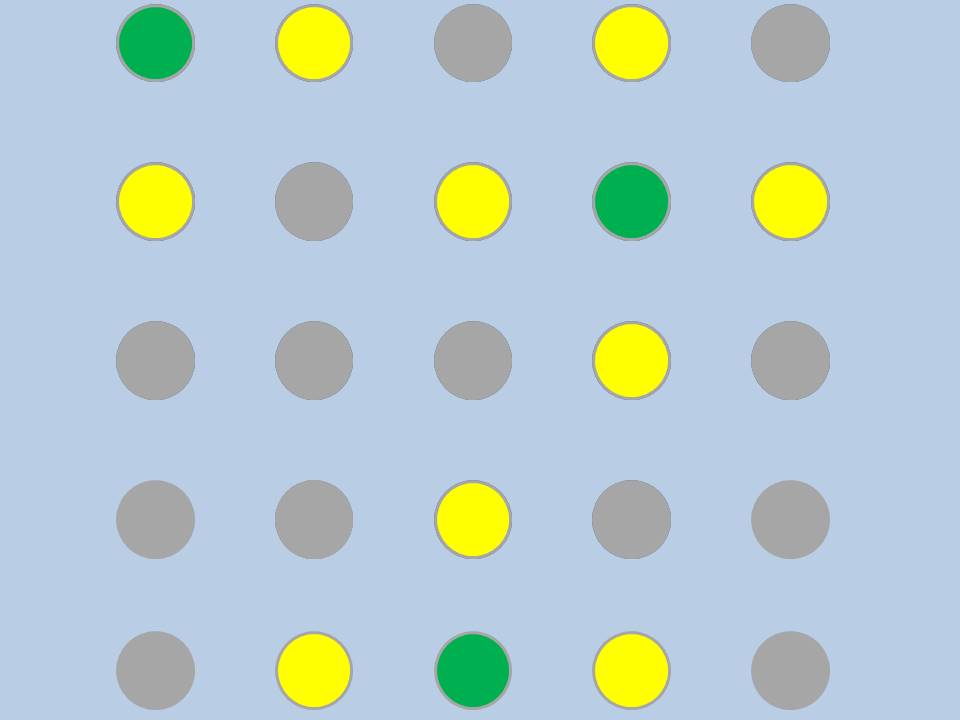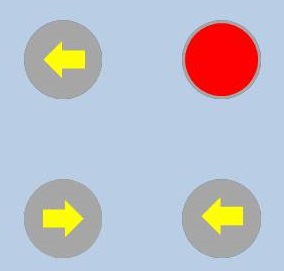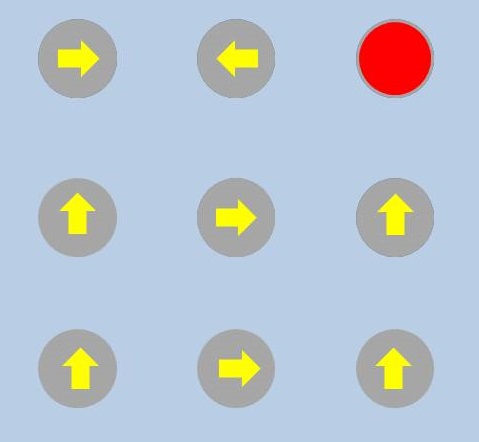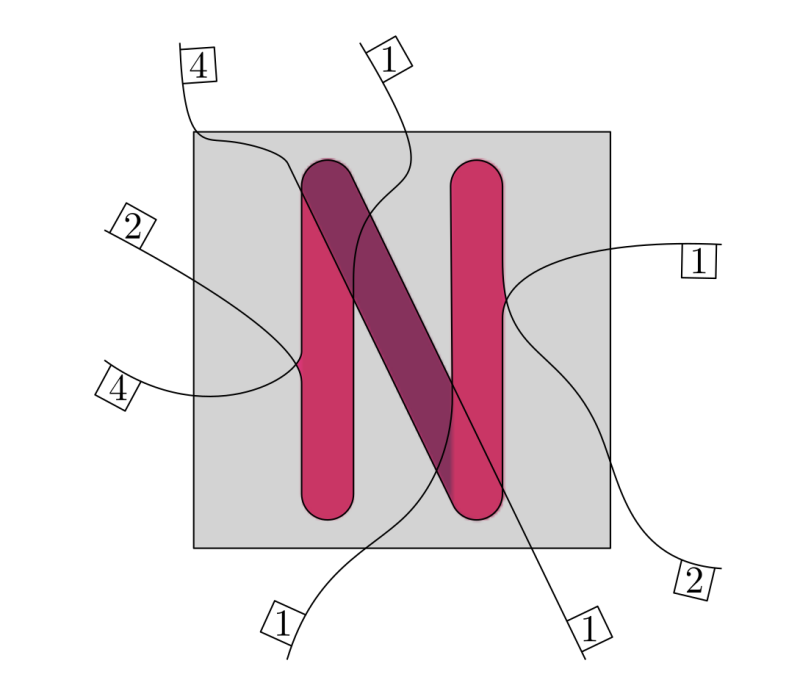Will you always reach your destination? This is the question to be answered.
Suppose that you are jumping from stone to stone on a lake. The stones are arranged as in the figure below.

We will call this formation of stones a  orthogonal grid. When jumping from stone to stone you are only allowed to jump to the nearest neighbors. Hence when you are on one of the green stones below you are only allowed to jump on the yellow stones.
orthogonal grid. When jumping from stone to stone you are only allowed to jump to the nearest neighbors. Hence when you are on one of the green stones below you are only allowed to jump on the yellow stones.

Hence you can't jump diagonally or on stones that are far away from the one you are standing on. Suppose that you start from the bottom left stone and you want to reach the top right stone. Then you can find many different paths to reach the end stone. But now it is that the game becomes interesting. We draw on every stone an arrow, like in the figure below.

On each turn, you move one square in the direction of the arrow, and then the stone you have departed turns 90° clockwise. If you’re not able to move because you are on a corner stone, then you remain on that stone and it turns 90° clockwise. The puzzle is to show that starting from the bottom left corner stone you will eventually reach the top right stone no matter how the arrows are when you start.
Exercise 1:
Consider first the  orthogonal grid and show that no matter how the arrows are placed when you start you will always reach the end stone.
orthogonal grid and show that no matter how the arrows are placed when you start you will always reach the end stone.
 Exercise 2:
Exercise 2:
Solve the same problem but for the  orthogonal grid.
orthogonal grid.

Exercise 3:
Can you also solve it for larger grids than the  one?
one?






